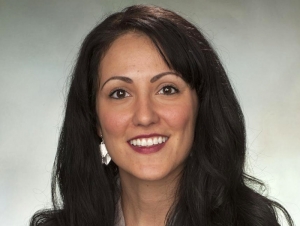
Over the past 25 years, public schools have shifted from placing students with disabilities in self-contained classrooms with little or no interaction with peers without disabilities to integrating them into general-education classrooms. Studies show this more inclusive approach results in fewer absences and better post-secondary outcomes for students with disabilities.
However, students with emotional and behavioral disabilities (EBD) are still educated in self-contained classrooms at a higher rate than students in any other disability category. One of the primary reasons is because teachers lack the skills to effectively and proactively respond to their behavioral needs, said Lisa Rafferty, chair and associate professor of exceptional education.
“Children with emotional and behavioral disabilities are the most isolated and have the lowest graduation rate of all students,” said Rafferty, who also teaches in the joint doctoral program in special education with the University at Buffalo.
One way to ensure better outcomes for these students is to help them learn how to self-regulate their behavior. This is an area in which Rafferty has focused her research and now relays to the next generation of teachers.
“My goal is to ensure that our teacher candidates are not just developing skills to monitor and modify student behavior, but that they also have the skills to help teach students how to self-regulate their own behaviors,” Rafferty said. “This is what they are going to need to function and thrive in society.”
Self-assured with a disarming smile, Rafferty has carved out an impressive academic career over the past decade. Since joining the Buffalo State faculty in 2008, she has received two prestigious awards—the President’s Award for Excellence in Teaching (2013) and the SUNY Chancellor’s Award for Excellence in Teaching (2015). She’s made numerous presentations at the local, state, and national/international levels and published in peer-reviewed journals, including Journal of Behavioral Education, Childhood Education, Applied Behavior Analysis in Practice, Teaching Exceptional Children, and Beyond Behavior.
Early in her career, Rafferty had an epiphany of sorts. She was teaching middle school students with EBD in a local day treatment school—without any training in behavior management.
“I decided that instead of struggling, I could become an expert in behavior management,” she said. “It’s really about using data to find evidence-based strategies to meet students’ needs.”
She was awarded a fellowship to pursue her doctorate in special education, with a focus on EBD, from the University at Buffalo, which she completed in 2008. Rafferty and other faculty teach their students a three-tiered approach to instruction in K-12 classrooms. The first proactive strategy works for about 80 percent of students while the other two, which include specialized and individualized instruction, are necessary for students with different needs Rafferty explained.
Instilling appropriate classroom management techniques is key both to the success of their students and to their careers.
“Lack of classroom management is one of the key reasons why teachers leave the classroom,” she said. “We want to teach our teacher candidates how to be proactive versus reactive.”
This concentration on providing practitioners with the tools to effectively meet their students’ behavioral needs and making authentic connections with children with disabilities are two reasons why school districts are eager to hire Buffalo State exceptional education graduates.
Rafferty is currently working with local schools and parents to identify what skilled practitioners need to go out into the field based upon the needs of the students. What she knows for sure is that classroom teachers need to recognize the strengths of all students and continue to challenge them academically where they are.
“If children are academically engaged in classroom learning,” she said, “they often don’t have the time or inclination to make poor behavior choices.”
Some content on this page is saved in PDF format. To view these files, download Adobe Acrobat Reader free. If you are having trouble reading a document, request an accessible copy of the PDF or Word Document.
